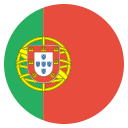Search
Select the dictionary language
differences in color or in brightness and darkness that an artist uses in a painting or photograph to create a special effect

What is "contrast"?
Contrast refers to the difference in lightness, darkness, or hue between colors, creating visual distinction and emphasis. High contrast occurs when colors have a strong difference, such as black and white, making parts stand out sharply. Low contrast involves similar or neighboring colors on the color wheel, leading to a more subtle and pleasing effect. Effective use of color contrast enhances readability, highlights important information, and adds depth and interest to visual designs.
the noticeable difference or opposition between two or more things that are compared
the difference in dark and light colors on a television screen
What is "contrast"?
Contrast refers to the difference between the light and dark areas of the image of a television screen. It determines how distinct the bright and dark parts of the picture appear from one another. High contrast makes the bright areas appear very bright and the dark areas very dark, which enhances the sharpness and clarity of the image. Low contrast results in a more subtle difference between light and dark areas, which can make the image appear softer or less vibrant. Adjusting the contrast helps improve image quality based on viewing preferences.
a conceptual distinction between ideas or categories
the action of distinguishing differences through comparison
to compare two people or things so that their differences are noticeable

to differ in a noticeable or obvious way
Lexical Tree




























